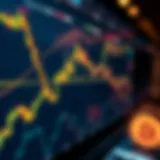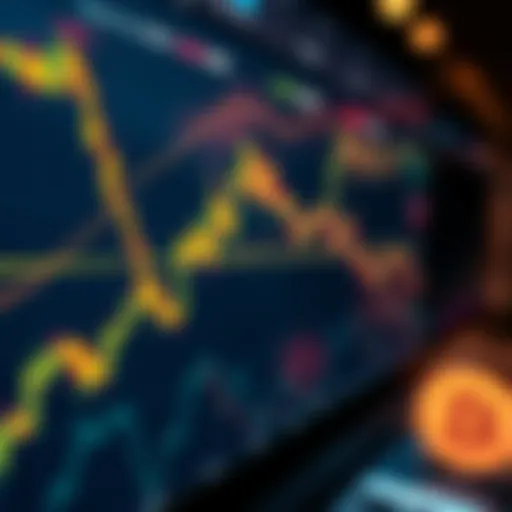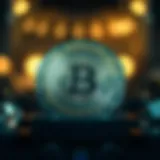A Beginner's Guide to Purchasing NFTs Successfully
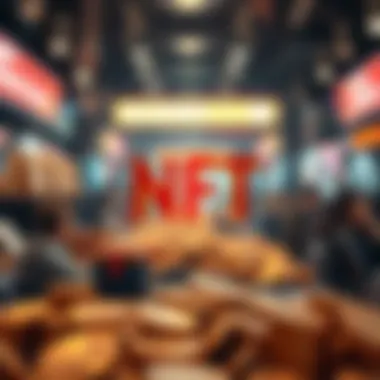

Intro
As the digital world continues its rapid evolution, the emergence of non-fungible tokens, or NFTs, has sparked a fervent interest among both investors and enthusiasts alike. Unlike traditional cryptocurrencies like Bitcoin or Ethereum, NFTs bring a unique element to the table—individuality. Each token represents a distinct asset, whether it's digital art, collectibles, or even access to exclusive content, allowing for a new frontier in ownership and investment.
This guide aims to demystify the process of purchasing NFTs, serving as a roadmap for those who are just dipping their toes into this exciting domain. In a realm where lingo can sound like gibberish at first, we will unravel essential concepts, explore various marketplaces, delve into wallet security, and highlight common pitfalls that can trip up even the most diligent buyers. It's critical to conduct thorough research before jumping into the marketplace, and this guide will assist in making informed decisions as you navigate this evolving landscape.
Much akin to stepping into a vibrant art gallery where every piece tells its own story, the world of NFTs opens doors to new forms of expression and revenue potential. To build a solid foundation, we must first start with
Understanding Cryptocurrency Basics
What is Cryptocurrency?
At its core, cryptocurrency is a digital or virtual form of currency that uses cryptography for security. This technology ensures that transactions can be carried out securely and anonymously, making it a key player in the evolution of digital finance. Unlike fiat currency, which is issued by governments, cryptocurrencies operate on a decentralized system known as a blockchain—a distributed ledger that records all transactions across a network of computers.
Understanding this fundamental concept is essential when diving into NFTs, as the latter relies heavily on cryptocurrency for transactions. Simply put, if you're looking to purchase an NFT, you will most likely need to buy it with Ether, the native cryptocurrency of the Ethereum blockchain, which is the most prominent platform for NFT transactions.
Key Terminology and Concepts
Navigating through the NFT space can feel akin to solving a Rubik's cube for the first time. Here are some key terms that will aid in comprehension:
- Blockchain: A digital ledger that records transactions in a way that is secure and immutable.
- Smart Contracts: Self-executing contracts with the terms of the agreement directly written into code.
- Minting: The process of creating an NFT and making it available on the blockchain.
- Gas Fees: Transaction fees required to compensate for the computing energy needed to process transactions on the Ethereum network.
- DAO (Decentralized Autonomous Organization): A digital organization run by smart contracts, where decisions are made through a consensus of its members.
Grasping these terms is like learning the lingo of a new dialect; it will empower you to communicate with others in the NFT community and aid in your purchasing endeavors.
With this foundation laid out, let’s take a look at investment strategies and tips that can further bolster your journey into the NFT marketplace.
Understanding NFTs
In the burgeoning sphere of digital assets, understanding non-fungible tokens (NFTs) is paramount. With the rise of this technology, many individuals and entities are delving into buying and trading these unique digital items. Grasping what NFTs represent, and how they function provides a solid foundation for engaging in this marketplace. This section sheds light on the pivotal components of NFTs, the benefits they bring, and pressing considerations for potential investors.
Definition and Characteristics of NFTs
Non-fungible tokens, or NFTs, are a type of digital asset that represent ownership or proof of authenticity of a unique item, typically leveraging blockchain technology. Unlike cryptocurrencies such as Bitcoin or Ethereum, NFTs are distinct and cannot be exchanged for one another at equivalence. Each NFT holds metadata which details its distinct characteristics, ensuring the asset's uniqueness. This uniqueness encapsulates various forms, from digital art and music to concert tickets, virtual goods in video games, and even real estate fractions.
Key characteristics of NFTs include:
- Indivisibility: Unlike traditional cryptocurrencies, NFTs cannot be divided into smaller units. They exist as whole items.
- Ownership Verification: The ownership of NFTs is traceable on the blockchain, where each transaction is recorded.
- Programmability: NFTs can incorporate additional features and rules within smart contracts that govern them, allowing for creativity in how they're used.
The emergence of these characteristics has fueled a wave of enthusiasm, drawing in all walks of life, enhancing the digital ownership experience.
Historical Background of NFTs
NFTs trace their history back to 2014 with the launch of Colored Coins, an experimental project built on the Bitcoin block. They were an early way to represent various assets. However, it wasn't until 2017, with CryptoKitties, that NFTs gained traction among the masses. This game allowed users to buy, breed, and sell digital cats, showcasing the potential for NFTs in gaming and collectibles.
Over the following years, the landscape shifted significantly. Major developments, like Ethereum’s ERC-721 standard, allowed for easier creation and transfer of NFTs. The 2021 art auction, where the digital artwork "Everydays: The First 5000 Days" by Beeple was sold for a record-breaking $69 million, marked a historic moment, demonstrating the broadening appeal and value ascribed to NFTs.
Comparison with Traditional Assets
When assessing NFTs against traditional assets, it's essential to consider both the structural and functional differences. Traditional assets, like stocks, bonds, or real estate, are typically fungible, meaning they can easily be exchanged for similar value. In contrast, NFTs offer a distinctive value proposition due to their unique nature.
Key differences include:
- Liquidity: Traditional assets often have established markets for easy liquidation. In contrast, the NFT market can experience varying liquidity depending on asset popularity.
- Valuation: While traditional assets’ values usually hinge on quantifiable data, NFTs often rely on subjective value assessments, influenced by collector interest and market trends.
- Authenticity: Provenance in the traditional art and collectibles market can be murky. NFTs, however, inherently provide clean proof of ownership and transaction history through blockchain.
This comparison resonants through various discussions in investing circles, as potential buyers weigh the evolving nature of ownership itself against established norms.
"NFTs can't be boiled down to mere monetary value; they revolutionize how we perceive ownership in the digital age."
In summary, understanding the core elements of NFTs, their historical context, and how they stack up against traditional assets equips potential investors with the knowledge necessary to navigate this innovative yet complex landscape.
The Mechanics of NFTs
Understanding the mechanics of NFTs is crucial because it helps to demystify their functioning and significance in the digital ecosystem. These mechanics govern how NFTs are created, bought, sold, and traded, impacting everything from ownership rights to market value. A clear grasp of these processes enables potential investors and enthusiasts to navigate the NFT landscape more effectively. By diving into the creation of NFTs and the underlying blockchain technology, one can appreciate their value and the considerations required for engagement with this novel asset class.
How NFTs are Created
NFTs are created through a process known as minting. This involves turning digital files—ranging from art, music, videos, and even tweets—into blockchain-based assets. The essence of minting lies in encoding specific information about the asset into a blockchain. Here’s a simplified breakdown of how it works:


- Selection of Digital Asset: Initially, creators choose a digital file they’d like to mint. This could be anything from a JPEG image to an interactive 3D model.
- Choose a Blockchain: Most NFTs are minted on Ethereum, but other blockchains like Binance Smart Chain and Solana have also entered the fray. The choice of blockchain can affect transaction fees and speed.
- Minting Process: Once the digital asset is ready, it is uploaded to an NFT marketplace or a smart contract interface. The platform processes the information and assigns the token a unique identification code, thus turning the digital asset into an NFT.
- Ownership Rights Embedded: While the NFT represents ownership, it’s essential to highlight that owning an NFT does not automatically grant copyright or reproduction rights to the underlying asset.
- Listing on Marketplaces: After minting, the NFT can be listed for sale on various marketplaces such as OpenSea or Rarible, allowing collectors and investors to purchase it.
The process of creating an NFT showcases not just initial production but also the importance of the platform chosen, which can greatly influence the reach and potential value of the asset.
Blockchain Technology Behind NFTs
The backbone of the NFT ecosystem is blockchain technology. Understanding its role is vital for anyone looking to navigate this space. Here are some key elements that underline its importance:
- Decentralization: Blockchains operate on a decentralized network of computers, ensuring that no single entity has control. This structure adds a layer of transparency and security, as transactions are recorded on multiple nodes.
- Immutable Records: Once a piece of information is added to a blockchain, it cannot be altered or deleted. This immutability ensures the integrity of ownership data, making it easy to verify authenticity and history of transactions.
- Smart Contracts: These are self-executing contracts with the agreement set directly in code. Smart contracts facilitate, verify, or enforce the negotiation and performance of an agreement, particularly useful in automating transactions related to NFTs.
- Interoperability: Many blockchain networks allow NFTs to be traded across different platforms. This interoperability opens up diverse marketplaces for transaction, making it easier to buy and sell across ecosystems.
Understanding these underlying mechanics is critical for anyone interested in acquiring NFTs. It empowers users to appreciate not just the digital art or asset they are purchasing but also the technology and legal frameworks that support and verify their ownership.
NFT Marketplaces Overview
NFT marketplaces form the backbone of the non-fungible token ecosystem. These platforms serve as the primary venues for buying, selling, and trading NFTs. Understanding how these marketplaces operate is paramount for anyone looking to navigate the realm of NFTs. They not only provide users the ability to list their tokens for sale but also facilitate transactions between buyers and sellers, creating a vibrant marketplace. With the increasing popularity of NFTs, the choice of marketplace can significantly impact the buying experience and the potential success of investments in these digital assets.
Overview of Popular Marketplaces
Diving into the world of NFTs requires a good grasp of the various marketplaces available. Here are some of the most well-known platforms:
- OpenSea: The largest and one of the most recognized NFT marketplaces, OpenSea allows users to trade a wide range of NFTs from art to virtual real estate. It supports various blockchains and has a user-friendly interface.
- Rarible: Rarible stands out as a community-driven marketplace where participating users can create, buy, and sell NFTs. It also features governance tokens, incentivizing engagement.
- Foundation: A more curated platform, Foundation focuses heavily on digital art and aims to build a community around creators.
- SuperRare: This marketplace is selective in its listings and prides itself on high-quality digital art. Artists must be invited to display their work, ensuring a certain level of exclusivity.
- Nifty Gateway: Known for its drops of high-profile NFT collections and collaborations with well-known artists and brands, Nifty Gateway facilitates credit card payments, lowering the barrier for entry.
Each marketplace has its unique features, and understanding them can help users make informed decisions about where to purchase or sell their assets.
Specialized Marketplaces for Different Assets
While general marketplaces cater to a broad audience, specialized platforms are tailored for specific types of NFTs. Here are a few specialized marketplaces worth noting:
- Zora: An open-source marketplace that enables creators to set their own prices and terms, particularly popular among musicians and visual artists.
- NBA Top Shot: A unique platform for basketball fans, hosting officially licensed products that allow users to trade and collect moments from NBA games.
- Axie Marketplace: Dedicated to the game Axie Infinity, this marketplace allows players to buy, sell, and trade Axies, the creatures used in the game, along with land and other in-game assets.
By focusing on these specialized marketplaces, buyers can explore niche art forms and creative works, often providing opportunities to engage with communities surrounding those assets.
Comparative Analysis of Fees and Features
Understanding the different fees and features across marketplaces is critical, as they can vary significantly:
- Listing Fees: While some platforms charge to list an NFT, others may take a cut from the sale price. For example, OpenSea charges 2.5% on successful sales but doesn't have up-front listing fees.
- Gas Fees: On marketplaces that operate on Ethereum, gas fees can fluctuate dramatically based on network congestion. This added cost can deter casual buyers.
- Payment Options: Some platforms only accept cryptocurrency, while others like Nifty Gateway allow for credit card transactions, making it easier for newcomers.
- Community Features: Marketplaces like Rarible offer governance features allowing users to vote on platform changes, which may appeal to those looking for a sense of belonging.
"Navigating through the NFT marketplaces is like choosing a culinary adventure; it requires exploration and a dash of courage to find what appeals, but the rewards can be immeasurable."
To learn more about the nuances of different NFT marketplaces and their offerings, visit Wikipedia for a comprehensive overview.
Setting Up Your Digital Wallet
Setting up a digital wallet is a pivotal step in your journey into the world of NFTs. Think of it as the vault that houses your digital treasures. A reliable wallet not only shelters your NFTs but also interfaces with various marketplaces, enabling you to buy, sell, and trade seamlessly. Therefore, having the right wallet is fundamental for anyone keen on diving into this fascinating digital realm.
Choosing a Suitable Wallet
When it comes to selecting a digital wallet, you'll find a plethora of options available, each with its specific features and functionalities. Here are a few key aspects to consider that will guide your choice:
- Types of Wallets: There are mainly three types of wallets: hot wallets, cold wallets, and hardware wallets.
- Supported Cryptocurrencies: Make sure the wallet you choose supports the cryptocurrencies you plan to use. For instance, some wallets might favor Ethereum, which is the primary blockchain for most NFTs.
- User Experience: A wallet with an intuitive interface can help ease you into the intricate world of digital assets. This becomes particularly important for users who are not well-versed in technology.
- Community and Support: Opt for wallets that are backed by a strong user community or consistent updates, indicating reliability and ongoing support.
- Fees: Various wallets may charge fees for transactions or withdrawals. Familiarize yourself with these to avoid unpleasant surprises later on.
- Hot wallets are connected to the internet and are typically more user-friendly, making them ideal for beginners.
- Cold wallets, in contrast, are offline, supporting better security against potential hacks, but can be less convenient for frequent transactions.
- Hardware wallets, like Ledger or Trezor, serve as a physical device offering a blend of security and accessibility.
Wallet Security Measures
Once you have selected a wallet, securing it becomes your top priority. After all, safeguarding your digital assets means safeguarding your investments. Here are essential security measures to keep in mind:
- Enable Two-Factor Authentication (2FA): Adding an extra layer of security via 2FA can significantly reduce unauthorized access attempts. It's a simple yet effective method to protect your wallet.
- Use Strong Passwords: Avoid the temptation of easy-to-guess passwords. Instead, create complex passwords including numbers, symbols, and varied case letters. Length does matter in this case!
- Backup Your Wallet: Most wallets provide the option to create a backup. Regularly back up your wallet's recovery phrase and private keys in a secure location. It's your lifeboat if anything goes south.
- Stay Updated: Keep your wallet's software up to date. Developers often release updates that patch vulnerabilities.
- Be Wary of Phishing Attempts: Always verify links before entering sensitive information. Scammers can disguise themselves as legitimate services. Double-check the URL and look for HTTPS as a sign of security.
In short, taking the time to set up and secure your digital wallet properly will save you time and heartache in the future.
The Process of Buying NFTs
In the rapidly evolving digital space, understanding the process of buying NFTs is crucial for anyone looking to enter this market. NFTs are not just digital images or files; they represent ownership of unique assets on the blockchain. This section will guide you through the essential steps of buying NFTs, detailing everything from account setup to the nuances of market transactions. Having a sound grasp of these procedures not only helps in navigating the marketplace but also sets the stage for informed investments and reducing the risk of misstep.
Creating an Account on a Marketplace
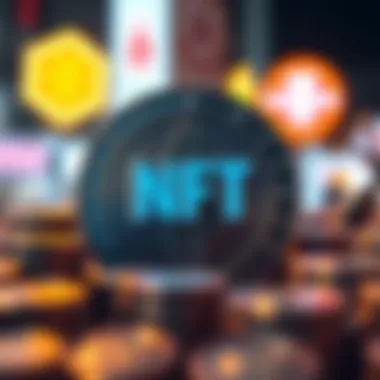

Before buying an NFT, you first need to create an account on a selected marketplace. Each marketplace might have slightly different processes, but generally, you'll need to go through a few standard steps.
- Choose a Marketplace: Consider a reputable NFT marketplace like OpenSea, Rarible, or Foundation. Each platform has its own specialties. For instance, OpenSea is well-known for its vast collection of items, while Foundation might focus more on artists and their works.
- Sign Up: Most marketplaces will require you to provide an email address and create a password. However, be mindful to use a secure password to protect your account.
- Connect Your Wallet: After registration, you might need to link a digital wallet—this is where your NFTs and cryptocurrencies will be stored. Wallets like MetaMask, Coinbase Wallet, or Trust Wallet are often recommended.
Once your account is set, you should be ready to explore offerings on the marketplace.
Funding Your Wallet
Having sufficient funds in your wallet is paramount, as this will allow you to make purchases seamlessly. Funding typically involves converting your local currency into cryptocurrency, which is what you'll need to transact on NFT marketplaces.
- Buy Cryptocurrency: Start by acquiring cryptocurrency through exchanges such as Coinbase, Binance, or Kraken. Bitcoin or Ethereum is commonly accepted for NFT purchases.
- Transfer Funds to Your Wallet: After purchasing, transfer the coins into your connected wallet. This step may involve a transaction fee, so keep an eye on those costs.
"It’s not just about having funds; it’s knowing how to move them quickly and efficiently, especially during a bidding war."
Ensure to check the respective platform's policies and support articles for detailed instructions on funding and transferring your wallet.
Bidding vs. Buying
When it comes to NFTs, you can either buy them outright or engage in bidding, which can be a thrilling yet risky process. Here’s a breakdown of each approach:
- Immediate Purchase: Many listings on marketplaces allow users to buy an NFT directly at the listed price. This is straightforward but can often mean you’re purchasing an item during a time of high demand, potentially at a higher price.
- Bidding Process: Alternatively, if you choose to bid, it can sometimes be a more budget-friendly option. You place an offer for the NFT, and if you’re the highest bidder when the auction ends, the NFT is yours. However, bidding can lead to unexpected outcomes, such as being outbid by others.
Both methods come with their own pros and cons; being aware of your preferences, budget, and the competitive nature of NFTs will help you decide which method best suits your needs. Knowledge of market dynamics plays a critical role here, so always keep an eye out for trends and tendencies in bidding behavior.
As we navigate through these processes, remember that real-time markets can fluctuate wildly. This is why being familiar with the mechanics of buying NFTs will greatly benefit your acquiring strategy.
Evaluating NFT Value
Determining the value of an NFT is crucial for anyone venturing into the digital asset market. Unlike traditional investments, the value of NFTs can fluctuate based on various elements, including rarity, demand, and the unique characteristics of the asset. Gaining a thorough understanding of these factors can help buyers make informed decisions and avoid potential pitfalls. This section will dissect the key factors that influence NFT value and examine significant market trends, as well as pertinent historical sales data to add context.
Key Factors Influencing Value
Several variables contribute to the perceived worth of an NFT. Understanding these factors is essential for anyone in the NFT space. Here are some key considerations:
- Rarity and Scarcity: The law of supply and demand is paramount in any market. In NFTs, items that are limited in number or uniquely attributed tend to hold more value. For instance, a digital artwork from a celebrated artist that exists as a single minted piece can command a higher price than one of many identical pieces.
- Provenance and Ownership History: The track record of the NFT, including its previous owners and sales history, can impact its valuation. Items with famous past ownership or ties to significant cultural events carry a premium. Think of it like a vintage wine; its history enhances its appeal.
- Utility: Some NFTs offer additional functionality beyond mere ownership – think virtual real estate or in-game assets in video games. These NFTs can provide benefits or services, enhancing their desirability and market value.
- Artist Reputation: The creator's stature plays a major role in value determination. Well-known digital artists or influencers often create NFTs that sell for impressive amounts, as buyers are paying for both the artwork and the artist's name.
- Market Sentiment: The hype around certain trends or themes can drive prices up or down quickly. For example, NFTs related to popular media franchises may see heightened interest, resulting in price increases.
"Investment in NFTs is as much about emotion and community as it is about tangible returns."
While these factors can guide buyers, it's imperative to remember that the market is not a crystal ball. What one buyer values may differ significantly from another's perspective.
Market Trends and Historical Sales Data
The NFT market is dynamic, akin to a ship navigating shifting waters. Tracking recent trends and historical sales data can reveal patterns and provide insight into where the market might be heading.
- Sales Volume: Observing the sales volumes of specific NFTs over time can offer insights into their value trajectory. A consistent upward trend in the price of certain digital artworks may hint at broader acceptance in the community.
- Emerging Themes: Just like fashion, NFT trends change. Themes such as virtual real estate or gaming assets have seen a surge. Those who keep an ear to the ground will recognize which sectors are gaining traction.
- Price Volatility: Prices can swing dramatically due to speculation; knowing this can help buyers align their expectations and navigate the market with a cautious eye. Historical price records, tracked on platforms like OpenSea or Nifty Gateway, also provide context that is invaluable for future purchases.
- Cultural Impact: An NFT associated with significant cultural moments often garners attention and can lead to price surges. For example, a meme or artwork that encapsulates a social movement can find value in its cultural relevance.
Potential Risks and Challenges
When venturing into the world of NFTs, understanding the potential risks and challenges is not just a good idea; it's essential. The NFT market can be a rollercoaster ride, filled with vibrant opportunities but also hidden pitfalls that can lead to substantial losses. As we explore each risk, consider the implications of not being prepared. Being informed allows you to navigate this complex digital landscape with more confidence and savvy.
Scams and Fraudulent Activities
The NFT space has attracted not only creators and collectors but also those looking to take advantage of naive newcomers. Scams are unfortunately common, often presenting themselves in the form of fake websites, phishing attempts, or misleading listings.
Key points to consider:
- Phishing Websites: These are often designed to look indistinguishable from legitimate platforms, tricking users into entering sensitive information. Always double-check URLs before entering any personal details.
- Counterfeit NFTs: Just as in traditional art, NFTs can be duplicated or mimicked. An investor might think they're buying an original piece, only to discover later that it's a knock-off. Always verify the authenticity of the NFT by tracing its blockchain history.
- Impersonation Scams: Fraudsters might pose as well-known artists or creators to sell a fake collection. If something looks too good to be true, it likely is. Always conduct thorough research on the creators and their works.
In navigating these dangers, vigilance is key. Set up alerts for suspicious transactions and engage with trusted communities where you can exchange information about known scams. Be skeptical; that skepticism can save you from becoming an easy target.
Market Volatility and Investment Risks
In the fast-paced NFT marketplace, volatility is the name of the game. The rapid rise and fall of prices can leave investors feeling like they’re on a financial seesaw. The key here is to understand that while some NFTs might skyrocket in value, others can plummet just as fast.
Here are some important considerations:
- Market Sentiment: The NFT market is driven by hype and trends. A popular NFT can go from highly coveted to worthless in what seems like an instant. Always keep an ear to the ground regarding market sentiment and be prepared for unexpected changes.
- Lack of Regulation: Unlike traditional assets, NFTs exist in a largely unregulated sphere. This absence of oversight means prices can be manipulated by insiders or celebrities, leaving the average investor vulnerable.
- Long-term Viability: Some projects may lack a sustainable foundation, making them short-lived fads rather than long-term investments. Assess the roadmap and use-case for each project before diving in.
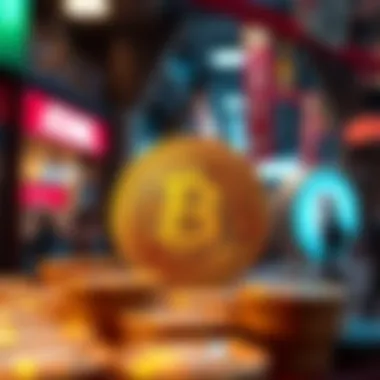

As you dip your toes into the NFT waters, remember the age-old wisdom, "Don't put all your eggs in one basket." Diversifying your investments can help mitigate risks and balance out potential losses. The landscape of NFTs is ever-evolving, and staying informed is your best weapon against volatility.
"In a market like this, being informed separates the savvy investor from the casual participant."
In summary, understanding the risks associated with buying NFTs and how to navigate them is pivotal, not just for protecting your investment, but also for encouraging a more stable and reputable market environment.
Legal and Regulatory Considerations
Navigating the NFT landscape involves not only understanding digital assets but also their legal frameworks. Since NFTs are relatively new, the legal orchestra surrounding them is still in tune-up mode. This section sheds light on crucial legal and regulatory aspects that buyers must be aware of to ensure they're not stepping on any legal landmines.
Intellectual Property Rights
This is a hot potato in the realm of NFTs. When you buy an NFT, what do you actually own? Is it just a digital certificate of ownership pointing to an artwork, or does it grant you the rights to reproduce or sell it?
Generally, purchasing an NFT doesn’t automatically convey copyright. Sellers may transfer ownership of the digital item but retain the original intellectual property rights. This means that what you get might be more of a collector's certificate than a full license to do whatever you please with the art. Therefore, deciphering the terms of the sale is crucial. Here are a few pointers to keep in mind:
- Read the Fine Print: Always check the NFT's listing for any stipulations regarding usage rights.
- Transferring Rights: Some creators may choose to grant specific rights, while others do not. Clarify this before making a purchase.
- Creator Agreements: Be aware that creators often retain the rights to future profits from resale.
Understanding these nuances helps buyers make informed decisions, ensuring you’re not just getting a pretty digital picture but also understanding what you can and cannot do with it.
Tax Implications and Reporting Requirements
As with any investment, acquiring NFTs comes with its own set of tax implications. It's advisable not to sweep these considerations under the rug, especially given the increasing scrutiny from tax authorities worldwide. Here are a couple of significant points to mull over:
- Reporting Gains: If you sell an NFT for a profit, you're responsible for reporting that gain. The capital gains tax rules apply, which means you could be taxed based on how long you held the NFT before selling. Keeping tabs on purchase and sale prices is essential to accurately reporting to the tax man.
- Sales Tax: Depending on your locale, some jurisdictions may impose sales tax on NFT transactions. It’s wise to familiarize yourself with local laws as regulations vary significantly across the globe.
For those wading into the NFT waters, consulting with a tax professional or advisor well-versed in digital assets is not just prudent but recommended. Creating a solid foundation of knowledge around these factors can prevent unwanted legal headaches further down the line.
Future of NFTs
The future of NFTs presents a fascinating frontier, ripe with possibilities and challenges. This section is crucial in understanding where technology is heading, especially for those looking to invest, develop, or simply engage with this emerging asset class. The inevitability of rapid change dictates that both the potential benefits and the hurdles that lie ahead must be carefully considered. As we dive into this space, it’s clear that innovation will be the backbone of developments in the NFT ecosystem.
Innovations and Trends to Watch
The landscape of NFTs is always shifting, influenced by advancements in technology and changing user behavior. Here are some significant trends and innovations worth keeping an eye on:
- Interoperability: Future platforms may support cross-chain compatibility, allowing NFTs from one blockchain to be used on another. This could enhance liquidity and broaden usage scenarios.
- Fractional Ownership: By breaking NFTs into smaller, fungible pieces, more investors can partake in high-value assets, democratizing access and encouraging a greater variety of ownership structures.
- Augmented Reality (AR) and Virtual Reality (VR): As AR and VR technologies grow, the integration of NFTs into these environments can create immersive experiences, reshaping how we think of digital art and ownership.
- Gamification: The merger of gaming and NFTs is one trend that's gaining traction. Play-to-earn models are thriving, and the gamification of ownership could lead to new user engagement methods and investment opportunities.
"The next frontier will not just involve more unique assets but a more interconnected world where NFTs can seamlessly operate across different platforms and communities."
The emphasis on sustainable innovation will also prove pivotal as creators, developers, and investors consider the environmental impact of their actions. Each of these trends heralds a future where NFTs are not merely collectibles but integrated components of digital life.
Sustainable Practices in NFT Creation and Ownership
Sustainability is becoming a watchword in the NFT realm, as awareness of environmental implications grows. The future will likely see an emphasis on eco-friendly practices to mitigate the carbon footprint associated with blockchain usage. Here’s how sustainability is expected to manifest:
- Energy-Efficient Protocols: Ethereum, the most popular blockchain for NFTs, is transitioning to Ethereum 2.0. This upgrade is intended to reduce energy consumption significantly through a proof-of-stake mechanism.
- Carbon Offsetting: Some platforms are partnering with environmental organizations to offset the carbon footprint generated by NFT transactions. Purchasers can choose platforms that align with their values in this regard.
- Sustainable Art Creation: Artists are beginning to adopt eco-friendly methods in the creation of their artwork, using tools that promote sustainability while gaining recognition in the NFT marketplace.
- Educated Consumer Choices: Buyers are becoming more discerning, seeking out NFTs that adhere to sustainable practices, thus driving demand for eco-conscious projects.
In the coming years, the spotlight will likely be on how NFTs can contribute to a sustainable digital economy without sacrificing the essence of what makes them unique in the first place.
The future of NFTs promises not only advancements that redefine ownership and creativity but also a conscientious approach to the environmental challenges they pose. Investors, creators, and enthusiasts must remain informed and adaptable to navigate the evolving tides of this digital revolution.
For more information about the developments in NFT technology, you can check resources like Wikipedia on NFTs and community discussions on Reddit.
Finale and Next Steps
As you navigate the dynamic world of NFTs, understanding the conclusion and the next steps is crucial. This isn't just about making a purchase; it's about grasping the entire ecosystem surrounding NFTs. Recognizing the nuances of the market, legal parameters, and potential avenues for investments will empower you to make informed choices. Buying tokens is only the initial stride; the broader horizon involves engaging with communities, exploring ownership rights, and contemplating the long-term value of your assets.
Moving forward, always keep your ear to the ground. Follow the trends, stay updated with emerging technologies, and don’t shy away from discussions in forums and groups. Connecting with fellow enthusiasts can provide valuable insights and possibly lead to collaborations that enrich your experience in this space.
Recap of Essential Points
As a quick synthesis of the key points from this guide:
- Understand the basics. Get a solid grasp on what NFTs are and their unique qualities.
- Choose the right marketplace. Not all platforms are created equal; find one that aligns with your needs and investment goals.
- Secure your assets. Familiarize yourself with different wallet options and adopt best practices for keeping your tokens safe.
- Evaluate NFT value. Assess market trends and the factors that influence the worth of the tokens you're interested in.
- Be wary of risks. Always be on alert for scams and consider the inherent volatility in the market.
Resources for Further Learning
Expanding your knowledge in the NFT field is essential for anyone looking to invest or become a part of the community. Here are some recommended resources:
- Wikipedia on NFTs: Wikipedia NFT Article
- Britannica's guide to digital assets: Britannica Digital Assets
- Reddit communities: Join conversations on platforms like Reddit
- Educational Websites: Websites like Coursera and edX often offer courses on blockchain and cryptocurrencies.
- Government resources: Familiarize yourself with legal aspects through official sources (.gov) or academic insights (.edu).
As you dive deeper into the realm of NFTs, remember that ongoing research and connecting with knowledgeable communities will serve you well in your investments.




